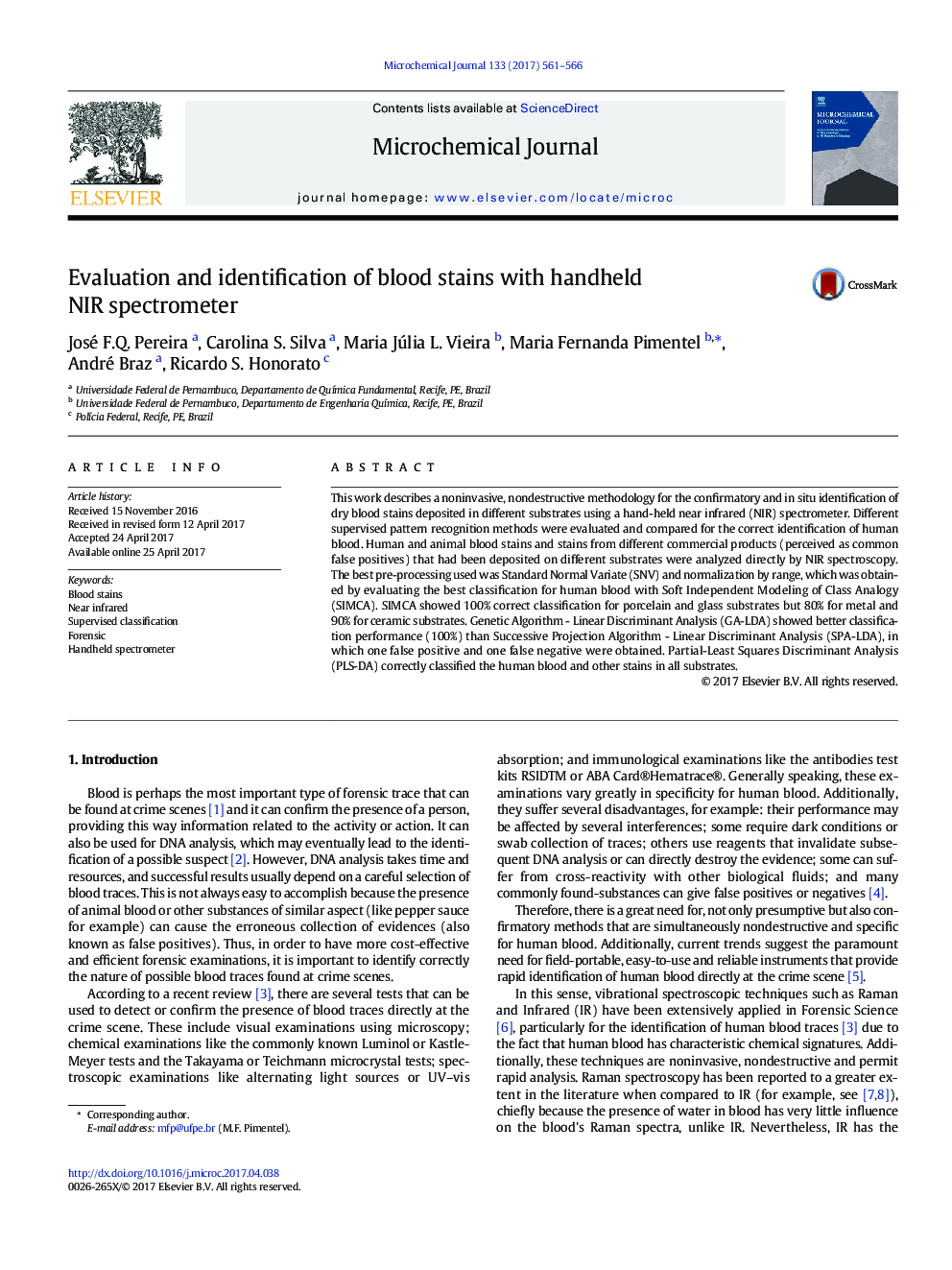| Article ID | Journal | Published Year | Pages | File Type |
|---|---|---|---|---|
| 5139070 | Microchemical Journal | 2017 | 6 Pages |
Abstract
This work describes a noninvasive, nondestructive methodology for the confirmatory and in situ identification of dry blood stains deposited in different substrates using a hand-held near infrared (NIR) spectrometer. Different supervised pattern recognition methods were evaluated and compared for the correct identification of human blood. Human and animal blood stains and stains from different commercial products (perceived as common false positives) that had been deposited on different substrates were analyzed directly by NIR spectroscopy. The best pre-processing used was Standard Normal Variate (SNV) and normalization by range, which was obtained by evaluating the best classification for human blood with Soft Independent Modeling of Class Analogy (SIMCA). SIMCA showed 100% correct classification for porcelain and glass substrates but 80% for metal and 90% for ceramic substrates. Genetic Algorithm - Linear Discriminant Analysis (GA-LDA) showed better classification performance (100%) than Successive Projection Algorithm - Linear Discriminant Analysis (SPA-LDA), in which one false positive and one false negative were obtained. Partial-Least Squares Discriminant Analysis (PLS-DA) correctly classified the human blood and other stains in all substrates.
Related Topics
Physical Sciences and Engineering
Chemistry
Analytical Chemistry
Authors
José F.Q. Pereira, Carolina S. Silva, Maria Júlia L. Vieira, Maria Fernanda Pimentel, André Braz, Ricardo S. Honorato,
